Kimono in Kyoto Nishijin
We can’t talk about Kyoto culture without Kimono.
Kyoto is the main place of Kimono and tea ceremony in Japan.
Since the emperor had lived in Kyoto until Meiji period in 1868, the traditional culture and techniques had been improved and perfected in Kyoto.
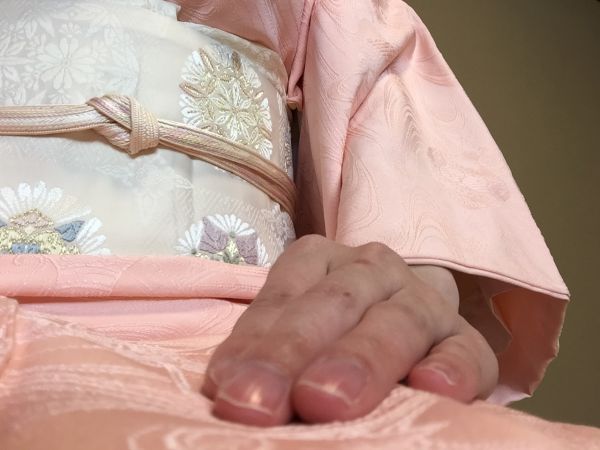
Material of authentic Kimono is silk although almost all kimono for tourists are made of polyester.
To make kimono, we have to start from making strings from a silkworm.
Boiling silkworm, we need at least 37cm×1250cm cloth to make one piece of kimono.
To protect this traditional kimono, the Japanese queen also grow the silkworm in the forest of the imperial palace.
The ceremony of “growing silkworm” is held every year around May 1st.
Queen’s silk is used to make the gift for the VIP foreign visitors and to make replica of the ancient textile in Shosoin in Nara prefecture.
After making strings, craftmen weave them little by little.
I remember we can here the sound of weaving every where in Nishijin Kyoto when I was a child. But nowadays, very few houses had the sounds.
Since the age of the craft men is becoming higher and higher, it is said it might be too late to maintain the skills of making kimono for the future.
Although yukata (casual summer kimono made of cotton), or kimono made of polyester are much popular among tourists, they can’t replace the delicate texture of the silk or hand painting colors.
Kyoto Kimono: Kyo-kanoko
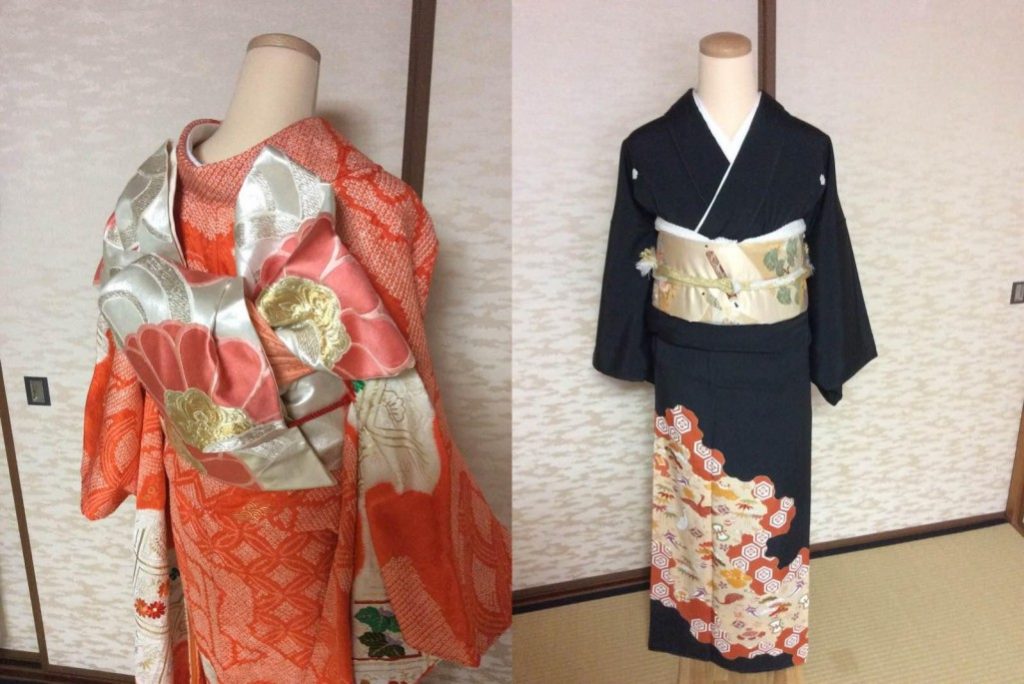
Kyo-kanoko is the design of tie-dyed cloth. It has the fine dots on the silk cloth like Red kimono on the left side.
This skill had been used since over 1000 years ago, and had been the most popular in the middle Edo period.
It takes 1 year or sometimes 2 years to make a gorgeous long sleeved kimono with Kanoko skill.
Kyoto Kimono: Kyo Yuzen
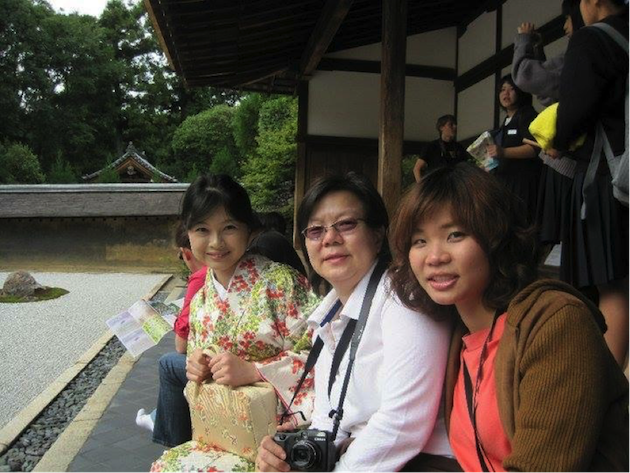
Kyo-Yuzen is the skill of hand painting for kimono in Kyoto.
Since Kanoko on the top was sometimes too bright, Kyo-Yuzen became popular when the Tokugawa shogun (general) issued a injunction of too gorgeous kimono around 1663.
At first, a craft men draw the designs by the blue liquid from a plant which belongs to a Commelinaceae. After Putting the starch on the blue lines for the protection against dyeing, dye the whole cloth at once.
Then, a craftmen put the colors little by little, from pale to dark, in the blue protected lines.
Kyoto Textile: Nishijin
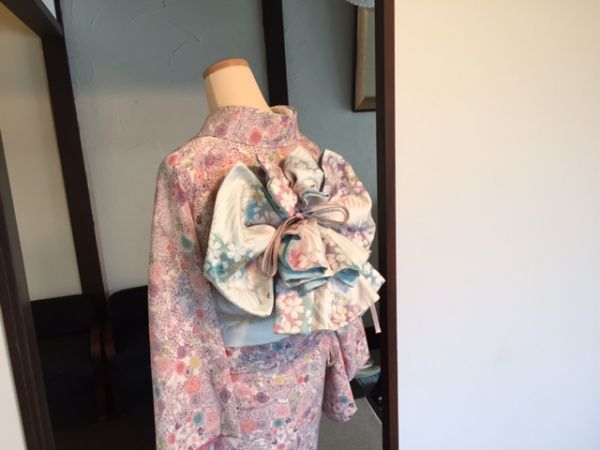
Talking about Nishijin textile, its technique is often used for Obi; sash for kimono. It’s also made of silk we have many beautiful designs for each seasons or formal occasions.
To show the feelings of the celebration or condolence, we choose the pattern of the sash for each occasions.
Kimono and Tea Ceremony in KOTO
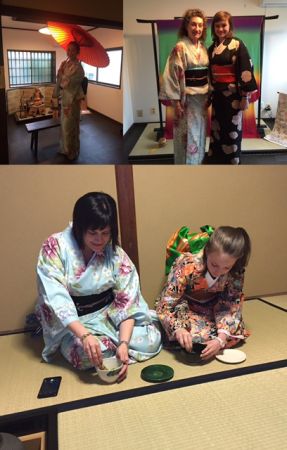
You can wear kimono during our tea ceremony.
Since we prepare everything in the same building, you don’t need to walk to some other places to wear kimono.
If you book the Private Tea Ceremony with Kimono plan, You can choose the silk sash using Nishijin textile here.





